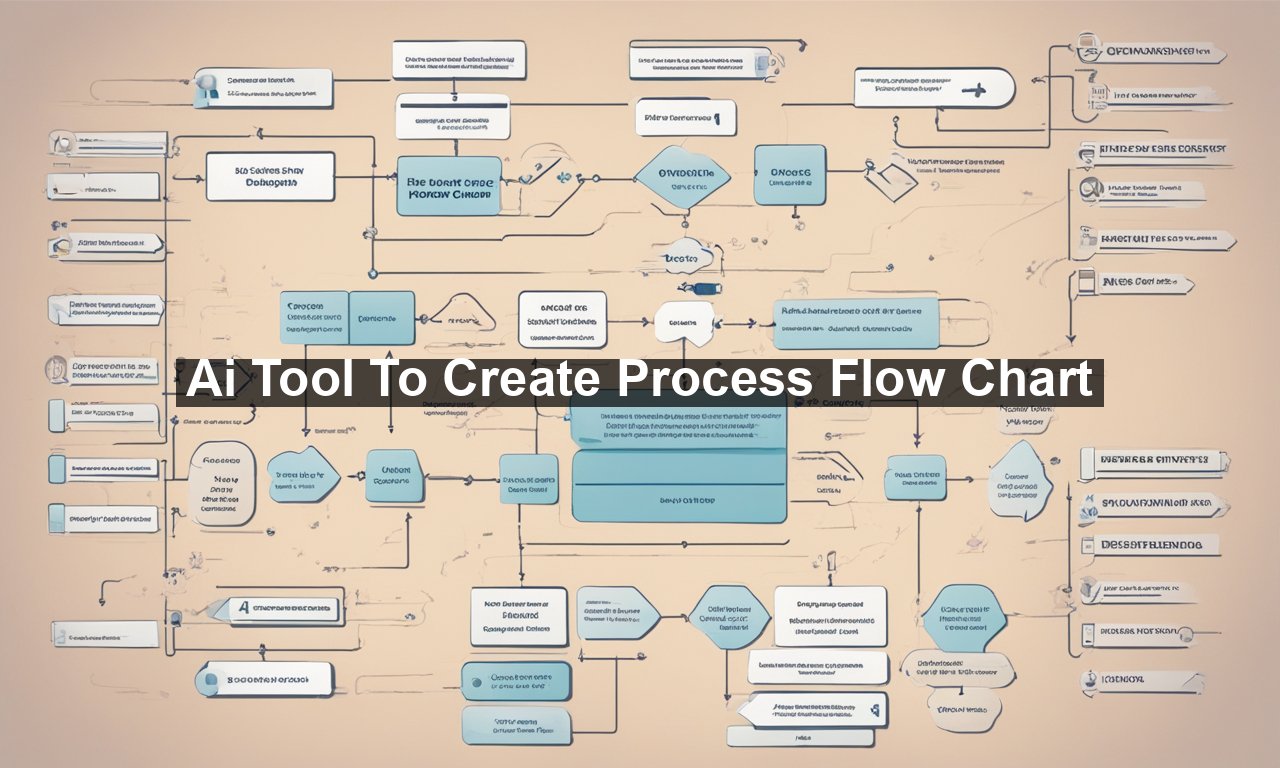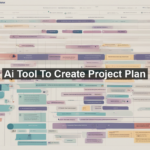In today’s rapidly evolving technological landscape, efficiency is the name of the game. One of the most significant ways businesses can boost their efficiency is by visually mapping their processes using flow charts. However, creating these diagrams can be time-consuming and complex. Enter AI tools that can automate the creation of process flow charts, bringing both simplicity and precision to this critical task.
Why Use AI Tools for Process Flow Charts?
Flow charts are indispensable in illustrating business processes, but manually designing them can prove to be daunting. This is where AI tools step in to make your life easier. These tools harness cutting-edge technology to convert raw data into well-structured flow charts, saving time and reducing the likelihood of human error.
Common Questions About AI Tools for Process Flow Charts
What Are the Key Benefits of Using AI Tools for Process Flow Charts?
The advantages of using AI tools to create process flow charts are numerous:
- Time-Efficiency: AI tools can drastically reduce the time required to create complex flow charts. With automated features and pre-set templates, these tools allow you to generate detailed diagrams in a fraction of the time it would normally take.
- Accuracy: Human error is an inherent risk in manual chart creation. By employing AI, you can ensure that your flow charts are not only precise but also up-to-date with real-time data.
- Scalability: Whether you’re working in a small team or a large corporate environment, AI tools can scale accordingly to meet your requirements.
Can AI Tools Integrate With Existing Business Software?
Absolutely! Most AI flow chart tools are designed for compatibility with a variety of business software. Integration can be seamless whether you’re using ERP systems, CRM platforms, or other data management software. This opens up a myriad of possibilities for comprehensive data analysis and reporting.
For a more in-depth look at how AI tools integrate with existing software, you might find this Forbes article on AI integration invaluable.
What Features Should I Look for in an AI Flow Chart Tool?
When selecting an AI tool to create your process flow charts, there are several key features you should look for:
- User-Friendly Interface: The tool should be easy to navigate so that team members can use it without extensive training.
- Customizability: Look for tools that offer customizable templates and elements, allowing for a tailored approach to different projects.
- Real-Time Collaboration: The ability for multiple team members to work on a flow chart simultaneously is a significant advantage.
- Data Import Capabilities: Ensure that the tool can easily import data from various sources to create accurate charts.
- Security: Opt for tools that offer high levels of security, especially if you’re dealing with sensitive information.
Best AI Tools for Creating Process Flow Charts
Here are a few top-notch AI tools that can elevate your process flow chart creation to the next level:
1. Lucidchart
Lucidchart is often heralded as one of the best tools for creating process flow charts, thanks to its intuitive interface and powerful features. It offers real-time collaboration and a wide array of templates to get you started. Lucidchart easily integrates with platforms like G Suite, Microsoft Office, and Slack, making it a versatile choice for any business.
2. Miro
Miro is another dynamic tool ideal for creating detailed flow charts. Known primarily as a collaborative online whiteboard platform, Miro features AI-based elements that can transform raw data into organized diagrams. It’s perfect for brainstorming sessions and team collaborations.
3. Creately
Creately utilizes AI to offer smart suggestions and auto-connect shapes based on real-time data. This tool is particularly beneficial for those who require intricate workflows and process maps. Besides, Creately boasts integration capabilities with popular project management tools, making it a comprehensive solution for businesses.
For further reading, check out this VentureBeat article on AI trends in enterprises.
Implementing AI Tools in Your Workflow
Jumping on the AI bandwagon might seem intimidating, but implementing these tools into your existing workflow doesn’t have to be complicated. Start by identifying the processes that would benefit the most from visual documentation. Gradually integrate AI tools, ensuring your team receives proper training and support to make the transition smooth.
Conclusion
AI tools for creating process flow charts are game-changers in the realm of business efficiency. By automating and streamlining the chart-making process, these tools not only save valuable time but also ensure accuracy and scalability. Equipping your team with the right AI tools can transform how you plan, execute, and optimize various business processes.
Unlock the true potential of your business by embracing AI-driven flow chart tools. The future of efficient, error-free, and dynamic process mapping is here. Start redefining your workflows with the power of AI today!
Remember, the key to staying ahead in today’s fast-paced business environment is to continually adapt and evolve. AI tools for creating process flow charts are a step in the right direction. Happy charting!











